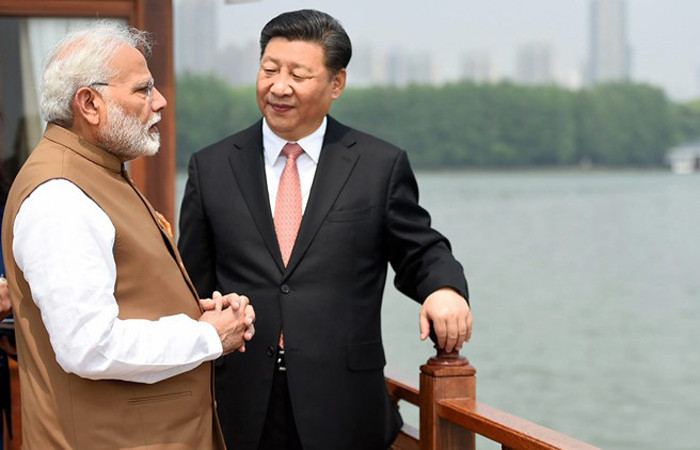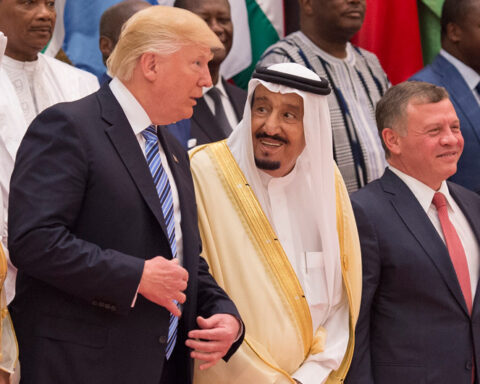A general assessment is that during Modi 3.0’s governance, Sino-Indian economic and trade relations will continue to develop. However, this development does not imply that Sino-Indian political relations, especially strategic mutual trust, will also progress. The developmental logic of Sino-Indian relations in these two major areas is different. A state of ‘cold politics and hot economics’ will become the norm.
The dynamics of bilateral economic and trade relations between the two countries mainly stems from three major driving forces.
The first driving force stems from domestic political logic in India. In the recent general election, the BJP’s performance was far below expectations, primarily due to the significant losses in the impoverished regions of northern India. Compared to 2019, the BJP lost 99 Lok Sabha seats in northern India, shattering the party’s dreams of winning a big majority or even overwhelming two-thirds majority of the seats on its own. Even Prime Minister Modi Ji did not achieve a significant victory in his constituency of Varanasi, receiving significantly fewer votes than before (from 5 lakhs last time to just over 1.5 lakhs this time). Two major factors contributed to the far fewer seats won by BJP than expected, one being the food inflation and the other being the jobless, plus the heat waves, making the vast voters feel tangibly the “hardships of life” during the election period, which lasting for 44 days in seven stage from April 19 to June 4. All in all, it is the severe lack of “sense of gains” among common voters has shattered the high expectations of Modi Ji and BJP.
On the one hand, by the end of 2023, the average retail prices of onions, tomatoes, rice, and sugar in India had increased by 98%, 32%, 14%, and 5% respectively compared to the end of 2022. In March and April 2024, India’s food inflation rates were 8.5% and 8.7% respectively. Additionally, Modi’s government reduced food subsidies by 3.3% in 2024, along with cuts in fertilizer subsidies. The predominantly poor voters in the north are particularly sensitive to these essential goods’ price fluctuations. Furthermore, during the voting period, record-breaking heat waves and severe shortages in tapping water and electricity added to voters’ dissatisfaction as they went to the polls. It is worthwhile to mention that by looking at the growth of added value in various industries in India in 2023, the agriculture, forestry and fishery industry, which is engaged in 46% of the employed population, increased by only 1.4%, which is much lower than the 4.7% growth rate in the previous year. The growth rate of the commercial and tourism industries, which is employed by 12% of the employed population, also fell to 6.4% from a double-digit rate in the previous fiscal year. Combined, these industries account for nearly 60% of India’s employed population. What these people feel first-hand can be said to be the economic downturn or the slowdown in economic growth.
On the other hand, over the past decade, there has been no significant improvement in employment rates. Lack of employment means that voters in the vast impoverished northern regions (with a population of around 800 million) lack nice income. A report released on March 26, 2024, by the International Labour Organization (ILO) and the Institute for Human Development (IHD), titled “2024 India Employment Report”, sheds some lights on this. The report reveals that young people account for nearly 83% of the unemployed labor force in India, and the proportion of unemployed youth with secondary or higher education has almost doubled from 35.2% in 2000 to 65.7% in 2022. Young people’s jobless can easily add more pressure upon one family. What is embarrassing is that the manufacturing sector, heavily promoted by Modi’s government, has not resulted in a significant increase in employment. Since 2014, only about 5 to 7 million jobs have been added in manufacturing. Even worse, during Modi’s 2.0 governance, a noted increase of 60 million in the number of agricultural workers since 2018 has been recorded. This change reflects broader challenges in the Indian economy, particularly in sustaining the movement of labor towards more productive sectors.
The lack of nice employment often means a lack of decent life. This makes the common people (Aam Aadmi) particularly sensitive to fluctuations in prices. As a matter of fact, in order to help the common people in managing the cost of their daily living, one of its strategies to stabilize prices, the Modi government in recent years has been striving to maintain a considerable scale of imports from China at competitive price. This is why India’s trade with China in goods (reaching $118.4 billion) surpassed the trade volume with the United States (standing at $118.3 billion) in 2023, making China India’s largest trading partner again. Specifically, India imported $101.8 billion worth of goods from China and exported $16.67 billion, marking an 8.7% year-on-year growth. This is also why Modi’s government has tolerated the severe trade deficit with China among complains. Despite the various decoupling efforts made by Modi’s government since 2020 Galwan incident, according to a December 2023 survey by India’s Business Today, more than half of Indians bought “Made in China” products last year. The United Nations Conference on Trade and Development (UNCTAD) released on March 22, 2024 the “Global Trade Update” report, which also indicated that India’s trade dependency on China rose by 1.2% in 2023.
Given the historical trends and the less-than-expected outcomes of the 2024 general election, it is safe to say that importing products, especially with extreme competitively price, from China will continue to be the “politically correct” strategy for the Modi 3.0 government. This approach is aimed at maintaining economic stability and managing the cost of living for the Indian populace, which aligns with the government’s broader economic and political objectives.
The second driving force stems from the logic of New Delhi’s pursuit of “Viksit Bharat@2047”. In 2020, the Modi government emphasized the vision of transforming India into a self-reliant manufacturing powerhouse, labeled it as Aatmanirbhar Bharat, while in the past two years around, Viksit Bharat@2047 has become the government’s new ambitious vision to transform India (alias Bharat) into a developed economy by the centenary of her independence in 2047. It is not a big surprise to see the industrial substitution strategy, implemented since Modi 1.0’s tenure, has quickly become the critical part in promoting “Viksit Bharat@2047” and Aatmanirbhar Bharat. A notable success was the near-complete localization of the entire smartphone production chain in India, except for the import of chips and batteries. India has even managed to produce the latest models of Apple iPhones locally. By December 2023, India’s production of iPhones represented 14% of the global output, totaling a value of $14 billion. Analysts even predict that in the coming two years around, iPhones produced in India might account for 20-25% of total iPhone shipments.
Encouraged by this achievement, the Modi 3.0 government, vowing to enable India overtake Japan and Germany to become the world’s third-largest economy in this tenure, will certainly continue its strive to replicate the smartphone manufacturing success in other sectors such as solar panel products, electric vehicles, lithium batteries, pharmaceuticals, and etc. moving India’s manufacturing towards high-end, intelligent and green. However, these are areas where Chinese manufacturing still leads significantly ahead of India. The “industrial substitution” strategy of the Modi government in its third term, if it is to succeed in these areas, will necessitate continued cooperation with Chinese enterprises in production and supply chains, with importing in particular the key raw materials, core components, high-quality capital goods in good prices. Indeed, at the onset of Modi 3.0’s term, policies were enacted to relax restrictions on Chinese investments in the aforementioned sectors and on visas for Chinese technical workers coming to India. The India Cellular and Electronics Association (ICEA) estimates that normalizing trade relations between India and China could increase the value addition in Indian enterprises from the current 18% to 22-23%. The ICEA emphasized that the path to self-reliance in the electronics manufacturing sector, for example, depends on “moving up in the China-led value chain”, hinting that the path to self-reliance not through de-coupling with China.
The third driving force is stems from logic of the Modi government’s strategic appeal to transform India into a “factory of the world”. In 2014, PM Modi launched the “Make in India” initiative, aiming to increase manufacturing’s share of GDP to 25% by 2020, a goal that has been postponed twice to 2025.
The effectiveness of these strategies is not only measured by the proportion of manufacturing in India’s domestic output, which still hovers around 18% by the end of 2023, but also by India’s share in global manufacturing, which currently stands at 2%, compared to a 35% global share for China’s manufacturing sector. This underscores the challenges and the distance yet to be traveled to fulfill the ambitious objectives of the “Make in India” initiative.
Given the strong international competitiveness of “Made in China,” the continual slump in foreign investments into India, and the restrictions posed by the “five flows” (flows of labor, land, materials, technology, and capital), the “Make in India” initiative faces significant challenges in competing internationally. These challenges are further exacerbated by the Modi 3.0 government’s difficulties in advancing or implementing major reforms in land, labor, taxation, and rural sectors due to coalition governance, which also hinders the resolution of issues related to the “five flows” that impede the development of India’s manufacturing sector.
In this regard, to achieve strong export competitiveness, “Make in India” might only enhance its position in the international market by importing cost-effective intermediate goods from China. The success in its smartphone industry, mentioned above, could be very enlightening. As reported by Indian media on May 23, 2024, citing the latest data from the Ministry of Commerce, smartphone exports from India in the fiscal year 2023-24 grew by 42% year-on-year, reaching $15.6 billion and becoming the fourth largest export product. Encouraged by this, Indian manufacturers would naturally follow such practices in many other areas. And more importantly, in sectors such as heavy machinery, electromechanical products, telecommunications equipment, and even critical parts of household appliances, Indian manufacturers often find no alternative suppliers outside China and ultimately have to rely on Chinese products, if they want sharpen the competition edge of their “India made” products in the international markets. This dependence illustrates the complex interplay between national manufacturing policies and global supply chains, highlighting the intricate challenges faced by India in diversifying its industrial base.
However, it has been the fact that the politicization and securitization of bilateral economic and trade relationship has really been disturbing, and hurting India’s side much more than China’s side. According to reports from the Economic Times and the Hindustan Times on June 15, 2024, a document submitted to various Indian ministries highlighted significant losses in the Indian electronics manufacturing sector due to strained India-China relations over the period from 2019 to 2024. The sector reportedly lost $15 billion in output and 100,000 jobs during this time. Additionally, tensions between India and China not only resulted in a $2 billion loss in value-added but also led to a missed opportunity worth $10 billion in exports.
The above three driving forces and three kinds of logics have not only explained the reasons why the economic and trade relations, especially bilateral trade, have continued to operate at high levels, despite the relationship between India and China reaching a three-decade low following the 2020 Galwan incident, and despite the Modi 2.0 government’s concerted efforts to align with the strategic expectations of the West by implementing measures aimed at “decoupling” and “de-risking” from China. Thereafter, based upon the above three driving forces and three kinds of logics, we can safe to say that the dynamics of bilateral economic and trade relations will be maintained in the coming five years at least.
Indeed, the Modi’s team, out of the lessoned learned from the 2024 general election, and due to the need to mending its fence in ensuring BJP’s long term ruling position in Indian politics, the need to implement its strategy for industrial resurgence, its aim to make India a “factory to the world,” has had to tolerate the discomfort of a much unbalanced trade relationship featured with the outstanding favor of China in terms of trade surplus. It can be said that even if India-China relations remain strained at a low level overall in the coming five years, particularly due to border disputes, the bilateral economic and trade relations are likely to remain active. This reflects the complex interplay between geopolitical considerations and the economic imperatives of national development strategies.
However, the fact that geopolitical tensions coexist with substantial economic engagements means challenges and disruptions ahead, faced by both governments of India and China.
Firstly, the disturbance from the continuing politicization of trade issues. On the one hand, the persistent trade deficit with China will still sparks anti-China sentiments in India, particularly becoming a focal point for a much stronger opposition parties now to criticize and even disrupt the ruling government’s efforts in maintaining the market rule-based trading relations with China.
Due to China’s manufacturing advantages featured with the robust industrial clusters and unparalleled comprehensive supply chains, due to the tense competition from other developing economies, due to more and more tariffs to protect their own producers being enacted, and most importantly due to fact that a coalition government would be forced to allocate more heavily on non-productive investments into voter-oriented welfare schemes, which would definitely hinder the effective utilization of India’s most crucial raw material—its human resources—and failing to capitalize on its “demographic dividend”, India seems to have missed the strategic opportunity to become a major global manufacturing hub like China and other East Asian manufacturing powerhouses. As a result, it would be extremely difficult for India to obtain the capacity to balance its trade relationship with China. Most of the “Made in India” efforts could primarily succeed in serving the domestic market (“In India for India”) rather than aiming for a significant global manufacturing footprint (“In India for Global”). That is to say, the trade deficit could become a lasting phenomenon in bilateral trade relations and hence becomes a perdurable disturbance to bilateral relations.
On the other hand, the Modi government’s efforts to encourage “localization” and “Indianization” of Chinese enterprises operating in India as part of its strategy for industrial substitution are likely to prompt retaliatory measures from China. The dramatic reduction of Chinese companies in India can be of some relevance. Under the increasing disturbance from the Modi government in the past four years, the number of Chinese companies decreased from more than 1,000 by the end of 2019 to approximately 300 by February 2024. These developments underscore the complexities of maintaining robust bilateral trade relations amidst geopolitical strains and domestic political pressures. The situation requires careful navigation to balance economic interests with national security and political objectives.
Secondly, the internal dynamics within India, particularly the tug-of-war between policies in the north and south regarding China, present another layer of complexity to Sino-Indian economic and trade relations. In periods when a coalition government is in power, the central government may decentralize authority to regional governments to secure and maintain the support of allies. Under such circumstances, state governments, local conglomerates, and small to medium enterprises, especially in the southern regions, may seek to enhance cooperation with Chinese businesses and increase imports from China. This strategy serves as a counterbalance to the pressures from the BJP-governed northern states and the large conglomerates favored by Modi or the BJP.
For instance, the Andhra Pradesh government aims to position the state as a manufacturing hub in India, potentially transforming it into a “trillion-dollar economy” state. As reported by the “Indian Express” on June 10, 2024, Nara Lokesh, the General Secretary of the Telugu Desam Party (TDP) which governs Andhra Pradesh, has expressed a desire for the BJP to increase investments and favoritism towards Andhra Pradesh in sectors like semiconductors and smartphones. The TDP’s support was crucial in Modi’s re-election, giving the central government an incentive to meet these demands to avoid destabilizing the coalition. However, Modi’s preference for making Gujarat the central manufacturing hub conflicts with increasing investments in Andhra Pradesh, which could disrupt the existing agenda.
Additionally, southern conglomerates, reluctant to be dominated by their northern counterparts, naturally lean towards cooperating with Chinese firms to bolster their competitive strength.
These policy divergences between the north and south, and between central and state governments, naturally impact the stability of Sino-Indian economic and trade relations.
Thirdly, the factor, influencing Sino-Indian economic and trade relations, involves third-party influences and regional dynamics. China continues to persistently expand its Belt and Road Initiative (BRI), strengthening economic and trade ties with India’s neighbors and integrating these economies into multilateral trade systems and mechanisms aligned with Chinese interests, such as incorporating Bangladesh and Sri Lanka into the Regional Comprehensive Economic Partnership (RCEP) and supporting Bangladesh’s application to join the BRICS grouping.
In response, India is actively leveraging the Indo-Pacific strategic framework to enhance its own regional influence. This includes various initiatives such as the Bay of Bengal Initiative for Multi-Sectoral Technical and Economic Cooperation (BIMSTEC); the Bhutan-Bangladesh-India-Nepal (BBIN) initiative; and the Act East policy for India to get deeply engaged economically with ASEAN and East Asian economies; launching I2U2 group involving India, Israel, the USA, and the UAE; and planning the India-Middle East-Europe Economic Corridor (IMEC); fabricating SAGAR project to provide “security and growth for all in the region”; collaboration with Japan to revive the Asia-Africa Growth Corridor; collaborating with the US and EU in implementing its Digital Public Infrastructure plan aiming to counter China’s Digital Silk Road in Global South and etc.
These efforts reflect a “neighborhood-first” policy collision within the Indo-Pacific region, leading to a direct confrontation between Indian and Chinese strategic imperatives. Given the underlying competitiveness and strained relations between India and China, these third-party engagements are likely to exacerbate frictions and disputes, thereby introducing new complexities into Sino-Indian economic and trade relations.
Source:
http://www.cicir.ac.cn/NEW/en-us/opinion.html?id=83a060e8-0d75-4a0e-ba68-31407475bef3






